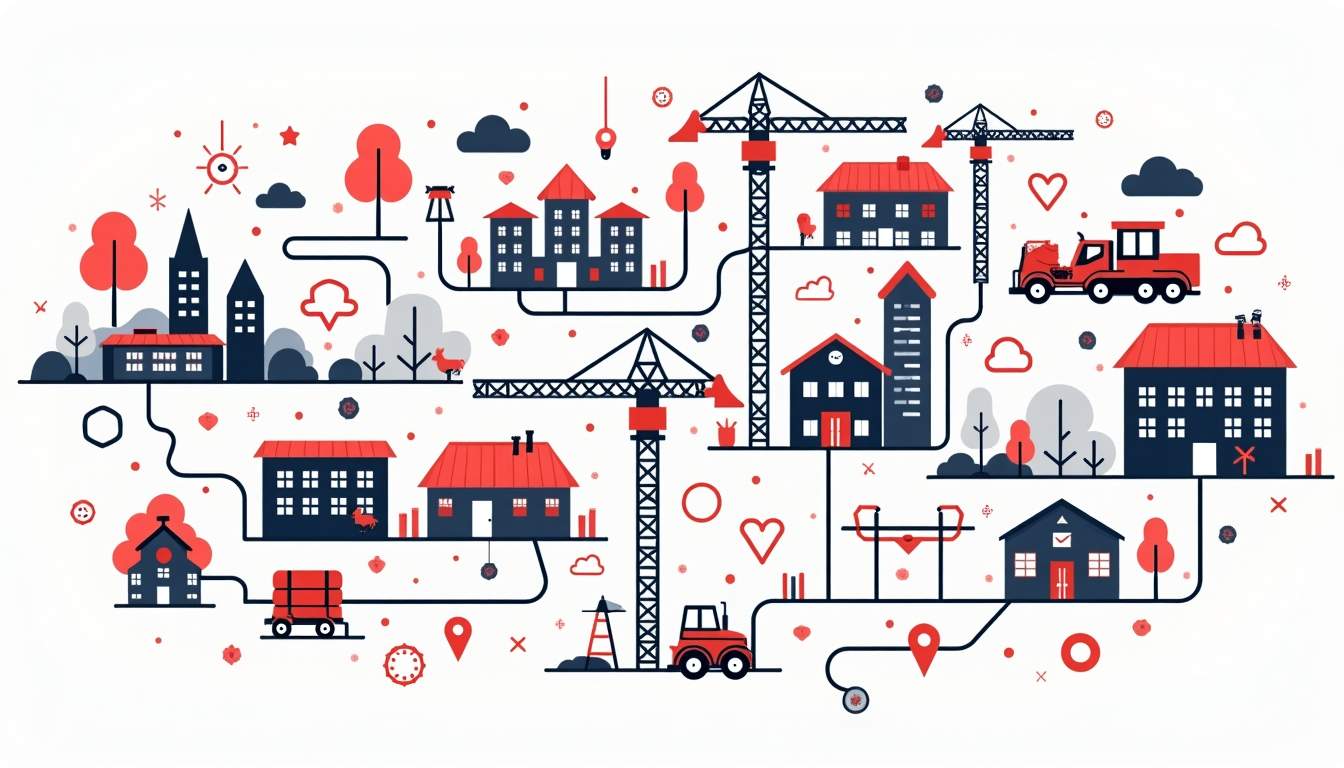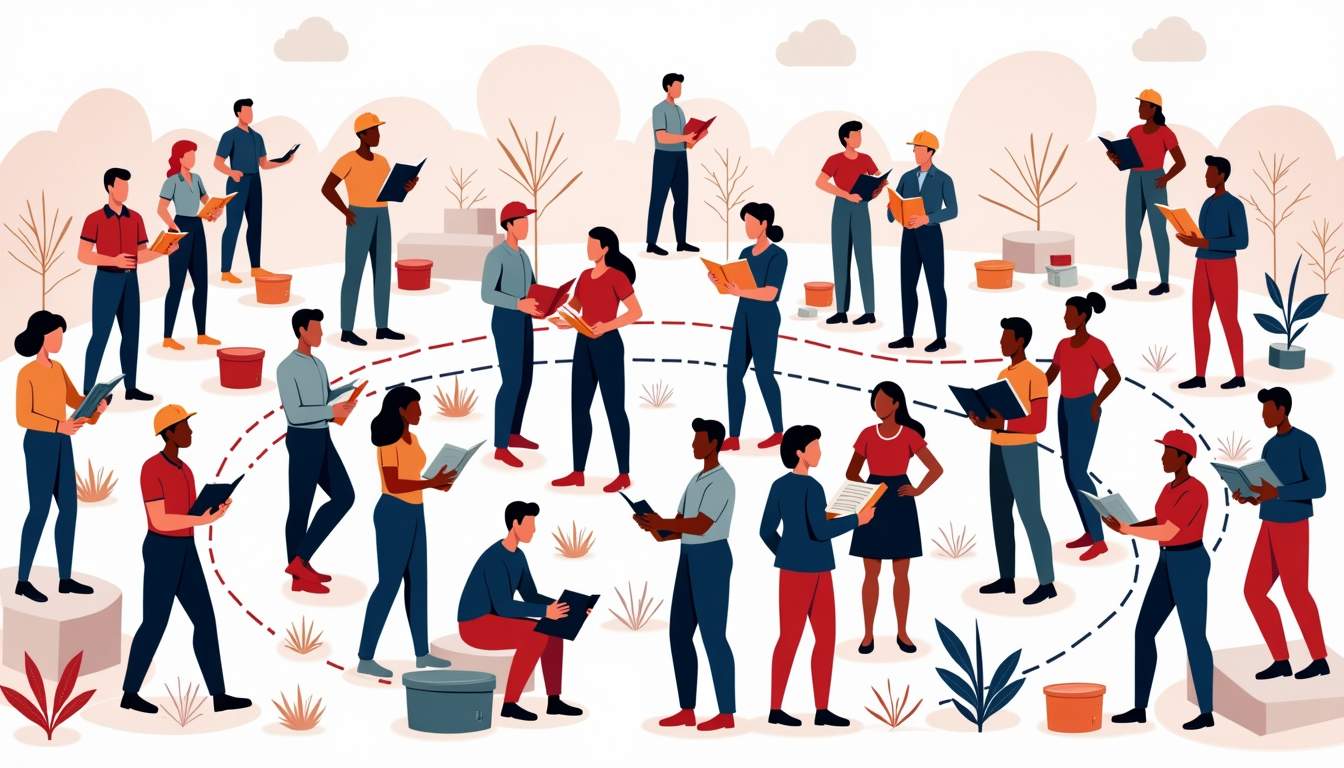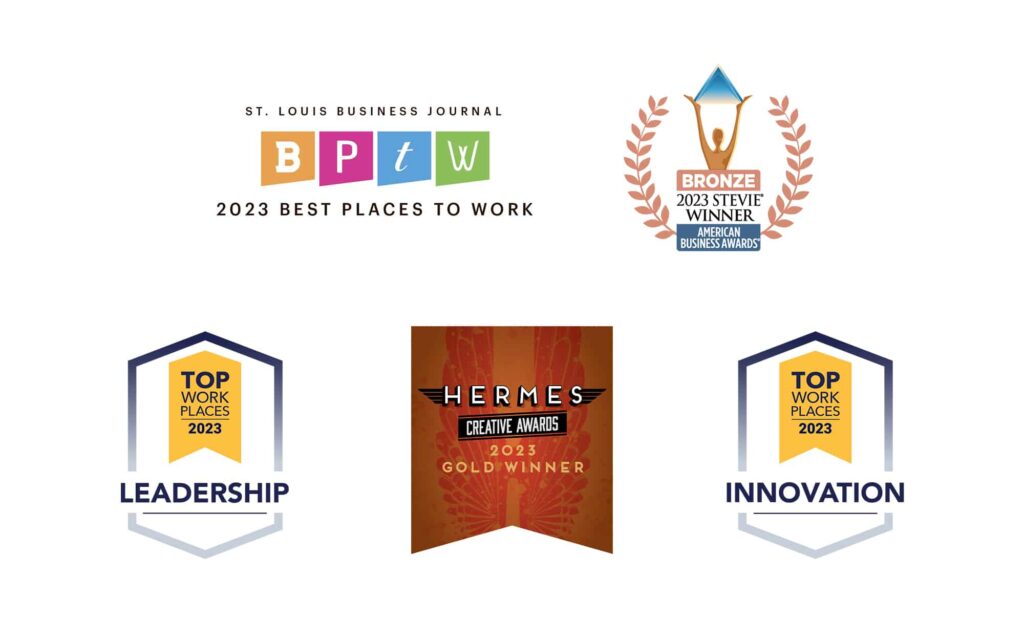The construction industry is facing an unprecedented labor shortage, with demand for skilled workers far outpacing supply. According to the Associated General Contractors of America, 80% of construction firms report difficulty finding qualified workers, a challenge that threatens project timelines, costs, and overall industry growth. In this environment, traditional recruiting methods are no longer sufficient. Forward-thinking construction companies are turning to strategic partnerships with trade schools and community outreach initiatives to build a sustainable pipeline of skilled labor.
This article explores how these partnerships work, why they are essential in today’s market, and how companies can maximize their impact to attract, train, and retain top construction talent.
Contents
The Construction Labor Shortage: A Critical Industry Challenge
The U.S. construction industry is projected to add nearly 650,000 new jobs by 2028, yet the workforce is aging rapidly. The average age of construction workers is over 42 years, and fewer young people are entering the trades. This demographic shift, combined with the cyclical nature of construction work and evolving skill requirements, has created a recruitment crisis.

Moreover, construction work is often misunderstood or undervalued by younger generations who may prioritize four-year college degrees over vocational training. This perception gap exacerbates the shortage, making it imperative for companies to engage directly with educational institutions and communities to reshape the narrative around construction careers. Initiatives such as high school apprenticeship programs and career fairs can help demystify the industry, showcasing the rewarding nature of skilled trades, competitive salaries, and opportunities for advancement.
Why Traditional Recruiting Falls Short
Traditional recruitment methods—such as online job postings, staffing agencies, and word-of-mouth—are no longer enough to meet the demand for skilled labor. These approaches often result in a reactive hiring process, where companies scramble to fill positions after projects have already started, leading to costly delays. This not only affects project timelines but also places additional stress on existing workers, who may be required to take on extra shifts or responsibilities to compensate for the labor shortage.
In contrast, proactive partnerships with trade schools and community organizations enable companies to build long-term talent pipelines, ensuring a steady flow of qualified candidates who are prepared for the specific demands of construction work. By investing in training programs and offering internships, construction firms can cultivate a new generation of skilled laborers who are not only equipped with technical skills but also understand the importance of safety and teamwork on job sites. Furthermore, embracing technology in recruitment, such as virtual reality simulations for training or using social media platforms to reach younger audiences, can significantly enhance engagement and interest in construction careers.
Building Strategic Partnerships with Trade Schools
Trade schools and vocational programs are critical hubs for developing the next generation of construction workers. By collaborating closely with these institutions, construction companies can influence curriculum, provide real-world training opportunities, and identify promising candidates early.
Aligning Curriculum with Industry Needs
One of the most effective ways to support recruiting is by working with trade schools to ensure their programs align with current industry standards and technologies. Construction techniques and equipment evolve rapidly, and schools that keep pace produce graduates who require less on-the-job training.
Companies can participate in advisory boards, offer feedback on course content, and sponsor specialized training modules. For example, integrating courses on green building practices, advanced framing techniques, or digital construction tools like Building Information Modeling (BIM) prepares students for modern job sites. Additionally, incorporating safety training and compliance education into the curriculum ensures that new workers are not only skilled but also aware of the regulations that govern the industry, which is crucial for maintaining a safe work environment.
Offering Apprenticeships and Internships
Hands-on experience is invaluable in construction. Apprenticeships and internships bridge the gap between classroom learning and real-world application, giving students a chance to develop practical skills while companies assess potential hires in a low-risk setting.
Programs such as the National Center for Construction Education and Research (NCCER) promote standardized apprenticeship frameworks that benefit both employers and trainees. Companies that invest in these programs often see higher retention rates and faster onboarding times. Moreover, by establishing mentorship programs within these internships, experienced workers can guide newcomers, fostering a culture of knowledge-sharing and professional growth that benefits the entire team.
Providing Scholarships and Sponsorships
Financial barriers can deter many prospective students from pursuing trade education. Construction companies that offer scholarships or sponsor students not only support workforce development but also build goodwill and brand recognition within the community.
These investments pay dividends by creating loyalty among recipients and encouraging more young people to consider construction as a viable and rewarding career path. Furthermore, companies can enhance their community engagement by organizing events that promote these scholarship opportunities, such as career fairs or open houses at local trade schools. By actively participating in these events, construction firms can showcase their commitment to education and workforce development, inspiring students to envision a future in the construction industry while simultaneously strengthening their own talent pipeline.
Community Outreach: Expanding the Talent Pool
Beyond trade schools, community outreach initiatives play a vital role in attracting diverse and motivated candidates to construction careers. Engaging with local organizations, workforce development boards, and underrepresented groups helps companies tap into new sources of talent.

Engaging Underrepresented Communities
The construction industry has historically struggled with diversity. Women, minorities, and veterans remain underrepresented despite their potential to fill critical labor gaps. Community outreach programs designed to connect with these groups can help break down barriers and foster inclusive hiring practices.
For example, partnerships with organizations like the National Association of Women in Construction (NAWIC) or veterans’ employment services provide targeted recruitment channels and support systems that improve retention. By offering mentorship programs and scholarships specifically for these demographics, companies can not only attract talent but also nurture their growth within the industry, ensuring they have the resources and guidance needed to thrive.
Hosting Career Fairs and Workshops
Career fairs, open houses, and skills workshops hosted in collaboration with community centers or high schools raise awareness about construction opportunities. These events allow companies to showcase career pathways, demonstrate equipment, and answer questions directly, helping to dispel myths and build enthusiasm.
Interactive workshops that teach basic skills—such as blueprint reading or tool safety—offer tangible value and encourage participants to consider construction training programs. Additionally, providing hands-on experiences, such as mini-projects that participants can complete during the workshops, can further ignite interest and give attendees a taste of what a career in construction entails. Such initiatives not only empower individuals with practical skills but also foster a sense of accomplishment and community.
Leveraging Social Media and Digital Platforms
Community outreach today extends into the digital realm. Social media campaigns targeting local audiences, video testimonials from current workers, and virtual tours of job sites can engage younger demographics where they spend much of their time.
Companies that create authentic, relatable content highlighting career growth, earning potential, and the pride of building infrastructure resonate more effectively with prospective workers. Furthermore, engaging in online discussions and forums dedicated to construction careers can help demystify the industry and provide a platform for potential candidates to ask questions and share their concerns. By actively participating in these digital communities, companies can cultivate a positive image and establish themselves as approachable, supportive employers in the eyes of future talent.
Maximizing the Impact of Partnerships: Best Practices
While partnerships with trade schools and community groups offer tremendous benefits, their success depends on thoughtful execution and ongoing commitment. These collaborations not only enhance workforce development but also strengthen community ties, creating a mutually beneficial environment where both businesses and local organizations thrive.
Establish Clear Goals and Metrics
Effective partnerships begin with clear objectives—whether it’s increasing the number of apprentices, improving diversity, or reducing time-to-hire. Defining measurable outcomes enables companies to track progress and adjust strategies as needed. For instance, setting specific targets, such as a 20% increase in apprenticeship placements within a year, allows organizations to focus their efforts and allocate resources efficiently. Additionally, utilizing data analytics can provide deeper insights into the effectiveness of various initiatives, ensuring that partners can pivot quickly in response to changing industry demands.
Foster Two-Way Communication
Successful collaborations require open dialogue. Construction firms should maintain regular contact with educators and community leaders to share insights, challenges, and successes. This feedback loop ensures programs remain relevant and responsive. Regular meetings, workshops, and informal gatherings can facilitate this communication, allowing partners to brainstorm innovative solutions to common problems. Furthermore, leveraging digital platforms for communication can enhance engagement, enabling stakeholders to connect even when they cannot meet in person, thus fostering a culture of collaboration that transcends geographical barriers.
Invest in Long-Term Relationships
Building a reliable talent pipeline is not a one-off effort. Companies that commit to sustained engagement—through continuous sponsorship, mentoring, and participation in advisory roles—reap greater rewards over time. Establishing internship programs or co-op opportunities can further deepen these relationships, providing students with hands-on experience while allowing companies to evaluate potential hires in real-world settings. Moreover, investing in training programs that align with industry needs not only enhances the skill set of the workforce but also demonstrates a company’s commitment to community development, fostering loyalty and trust among partners.
Highlight Success Stories
Showcasing employees who have advanced from trade school to skilled roles serves as powerful motivation for prospective workers. Sharing these narratives publicly reinforces the value of partnerships and encourages broader participation. Utilizing various platforms—such as social media, company newsletters, and community events—can amplify these success stories, reaching a wider audience. Additionally, creating video testimonials or case studies can provide a more personal touch, illustrating the real-life impact of these partnerships on individuals and the community as a whole. By celebrating these achievements, companies not only inspire future generations but also build a positive reputation that attracts talent and fosters community pride.
The Bottom Line: Partnerships as a Competitive Advantage
In today’s tight labor market, construction companies that proactively invest in partnerships with trade schools and community outreach programs position themselves for long-term success. These collaborations not only alleviate immediate hiring challenges but also foster a more skilled, diverse, and loyal workforce.

By aligning educational programs with industry needs, providing hands-on training opportunities, and engaging directly with communities, companies can build a sustainable talent pipeline that drives productivity and innovation. The construction firms that embrace these strategies will not only survive the labor shortage but thrive in the evolving marketplace.
Moreover, these partnerships can also enhance a company’s reputation within the community. When construction firms actively participate in local events, sponsor educational initiatives, or offer scholarships to promising students, they cultivate goodwill and trust among potential employees and clients alike. This positive public perception can lead to increased business opportunities and a stronger brand identity, further solidifying their competitive edge.
As the industry continues to grow and change, partnerships with trade schools and community outreach will remain indispensable tools for recruiting the skilled workers essential to building America’s future. Additionally, these collaborations can pave the way for innovative training programs that incorporate the latest technologies and practices in construction. By staying ahead of industry trends and equipping the next generation of workers with cutting-edge skills, companies not only enhance their workforce but also contribute to the overall advancement of the construction sector, ensuring that it meets the demands of a rapidly evolving economy.

Madison Hendrix
Madison has worked in SEO and content writing at Abstrakt for over 5 years and has become a certified lead generation expert through her hours upon hours of research to identify the best possible strategies for companies to grow within our niche industry target audiences. An early adopter of AIO (A.I. Optimization) with many organic search accolades - she brings a unique level of expertise to Abstrakt providing helpful info to all of our core audiences.
- Madison Hendrix#molongui-disabled-link
- Madison Hendrix#molongui-disabled-link
- Madison Hendrix#molongui-disabled-link
- Madison Hendrix#molongui-disabled-link

Michael Carter
Michael Carter is the President of Talent Solutions, an Abstrakt division specializing in corporate recruiting, staffing, and talent acquisition services. With over 12 years at Abstrakt, Michael has played a key role in cultivating top talent and building high-performing teams. His passion for connecting great people with great companies inspired the launch of Talent Solutions, where he leads a dedicated team focused on delivering fast, effective hiring results across industries. Known for his adaptability and hands-on leadership, Michael is committed to helping businesses grow through strategic, people-first recruitment.
- Michael Carter#molongui-disabled-link
- Michael Carter#molongui-disabled-link
- Michael Carter#molongui-disabled-link
- Michael Carter#molongui-disabled-link







